Old Hasankeyf was a small historic town set on the banks of the Tigris river. It was said to be one of the oldest continuously inhabited communities in the world at over 12,000 years old. To this day, signs of human habitation can still be found on top of the hills and in caves along the cliffs below.
Hasankeyf became popular with tourists because of the pretty ruins and monuments sprawled out along and above the Tigris River, along with the breathtaking scenery of its cliffs and canyons. An oasis in the surrounding desert.
However, despite much protest, in 2020 plans to dam the Tigris river went ahead and the entire valley was flooded. The old town of Hasankeyf was no more.
Thankfully, before the flood, many of the historical sites were relocated out of the valley and repositioned on the edge of New Hasankeyf (Yeni Hasankeyf). So after this drastic change to the landscape, is Hasankeyf still worth visiting as a tourist?
This is a guide to visiting Hasankeyf in 2024. I describe everything you can expect to see on a trip to this once popular tourist destination.
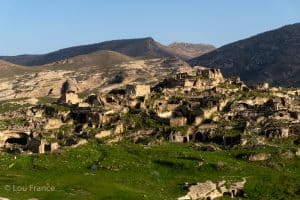
Disclaimer: Some links in this article are affiliate links, which means that if you purchase through them I receive a small commission, at no extra cost to you. This helps cover the cost of running this blog. Thanks for your support!
From Old Hasankeyf To New Hasankeyf
With the decision to construct llisu Dam and flood the valley, residents of Old Hasankeyf were moved to a new, purpose built town further up the hillside. The architects of this whole project will argue that the townsfolk will benefit from all the advantages of living in a new town, but at the moment it looks soulless.
It’s hard to imagine right now but hopefully with some extensive tree planting and a bit of time, the new town with flourish in its new location and so will its residents.
Before the flood big projects were undertaken to move eight historic buildings to higher ground, to be displayed to future tourists of the area.
The Castle and ruins of the earliest part of Hasankeyf remain above the floodwaters and are currently being restored. It is possible to reach these ruins by boat across the reservoir from the new town or by driving round to them via the nearby bridge and some interesting mountain tracks.
As a tourist site, Hasankeyf still has a huge amount to offer in terms of its history and the landscape up in the ancient ruins is stunning. The ruins themselves are extensive with many old churches and mosques waiting to be explored. So all is not lost, Theres still plenty to enjoy here.
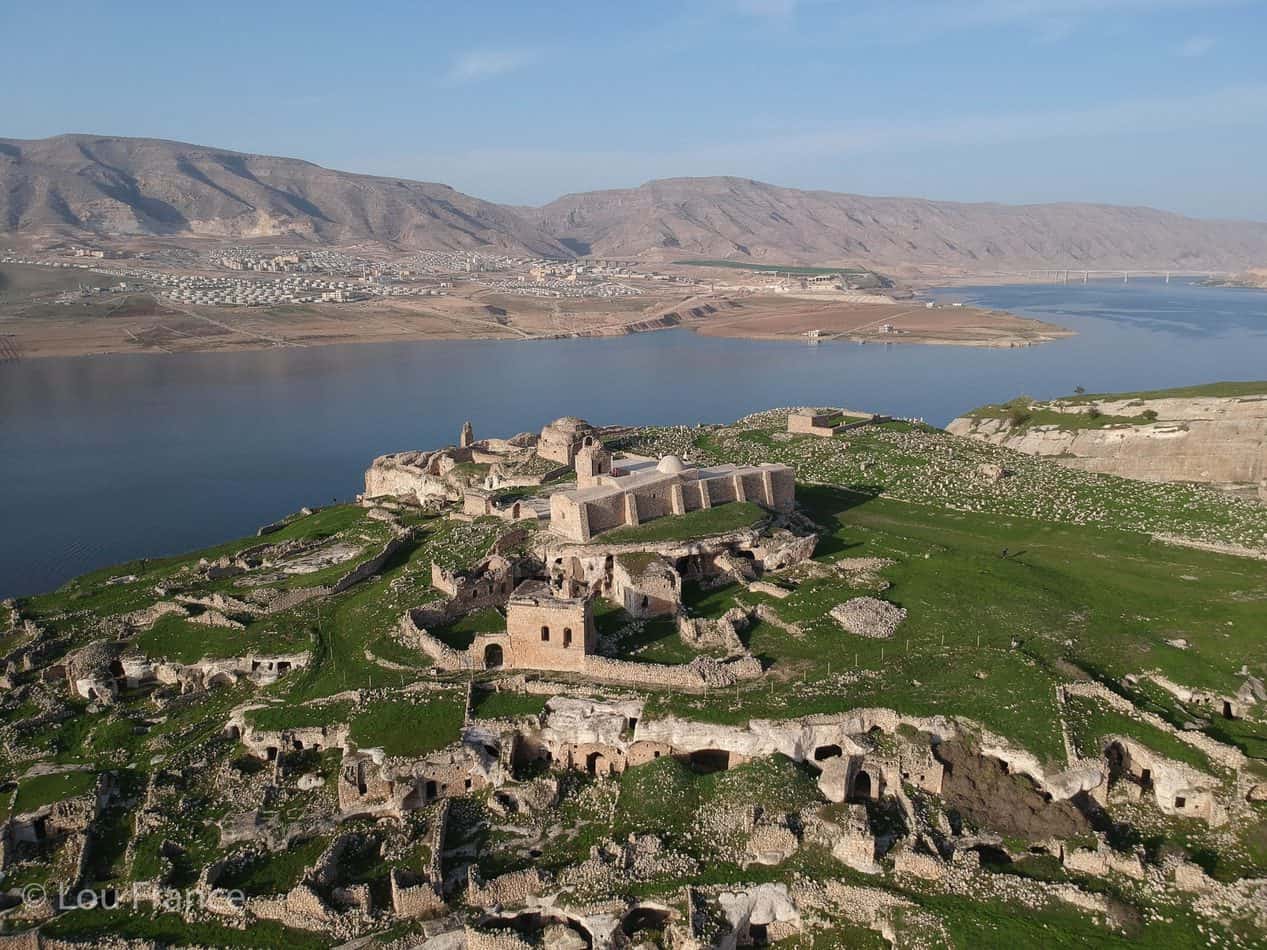
Sites To See At Hasankeyf
Although it’s no longer possible to see the old town of Hasankeyf, all is not lost as there is still plenty to see above the waterline. A visit to Hasankeyf can be divided into two areas, one area either side of the Tigris. On one side is the Cultural Park and on the other side is Hasankeyf Castle.
The Cultural Park In Yeni Hasankeyf
Set up above the reservoir and alongside the new town is the New Cultural Park. This forms the hub of the tourism area on this side of the river and contains the new museum and structures saved from the flood.
During our visit in March 2022 this area was very much under construction but it was aiming to be finished for the summer tourist season.
From below the park, boats can take you to the Castle and ruins on the opposite bank of the reservoir.
Hasankeyf Museum
This brand new museum in the cultural park showcases the history of Hasankeyf and houses important relics from the towns history.
Er Rizk Mosque
This mosque was originally built in 1409 by the Ayyubid king Abu’l Mefshir Suleyman. It is one of the few historic buildings that was saved from the flood and which has now been relocated and restored including the stunning twin-staired minaret.
The mosque has also been expanded so it can continue to serve the local community for several hundred years to come.
Zeynel Bey Tomb
Probably the most fascinating building that was moved from the valley is the Persian style mausoleum Of Zaynel Bey. Zeynel Bey was the prince of the Turkoman Aq Qoyunlu tribe and died in a battle against the Ottomans.
The tomb was built by an Iranian architect whose heritage is clearly reflected in the blue and turquoise decorated tiles that adorn the monument.
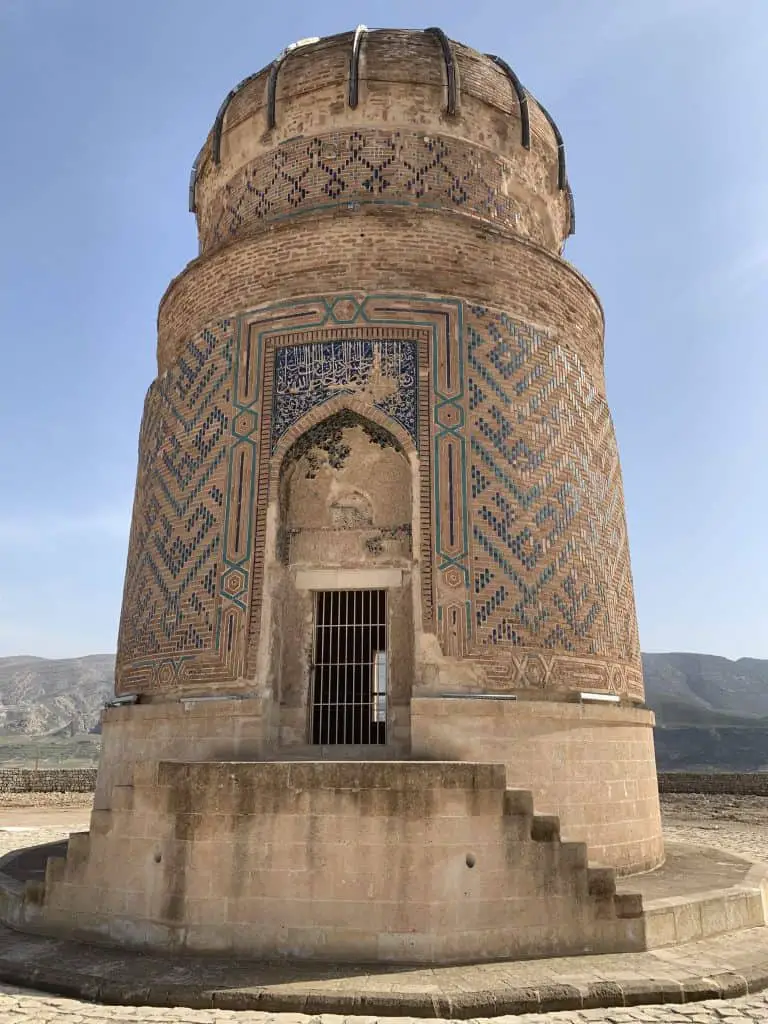
Hasankeyf Old bridge
The remains of the old bridge, one of the largest of its kind and an important icon of the town are now under the floodwaters of the new dam, however parts of it have been relocated to the cultural Park.
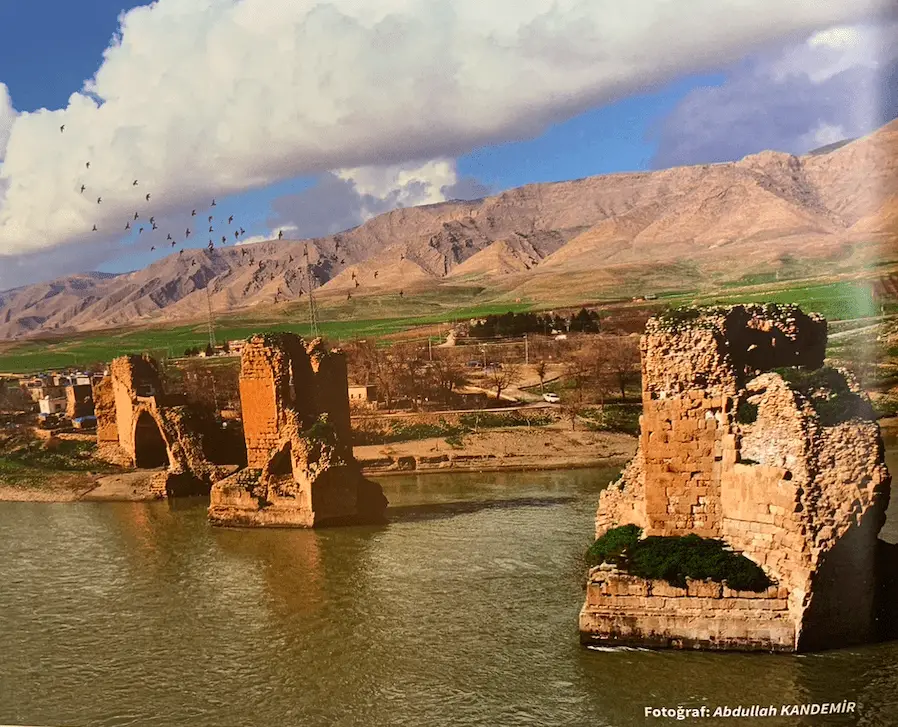
Hasankeyf Castle
The Castle can still be seen perched high up of the cliff top, overlooking the new reservoir. The lush hillside has gorges weaving through it and is a beautiful area for hiking. The Castle was built during the Byzantine Era and is said to have severn entrance gates, three of which are hidden.
The entrance gate which you enter if you drive to the castle, bears an inscription of the Ayyubids and is positioned by the stairs leading to the interior of the this fabulous fort. It’s a huge complex which houses the remains of various residential buildings, religious sites and cave dwellings.
Access to the castle can be gained by driving across the new bridge and then weaving your way around the mountain roads. Be weary of Google Maps as during our visit the new reservoir wasn’t recognised and was still showing Old Hasankeyf being above the water level. This means Google will try to navigate you through flooded roads!
Alternatively, take a boat trip across to the Castle from New Hasankeyf, just below the Cultural Park.
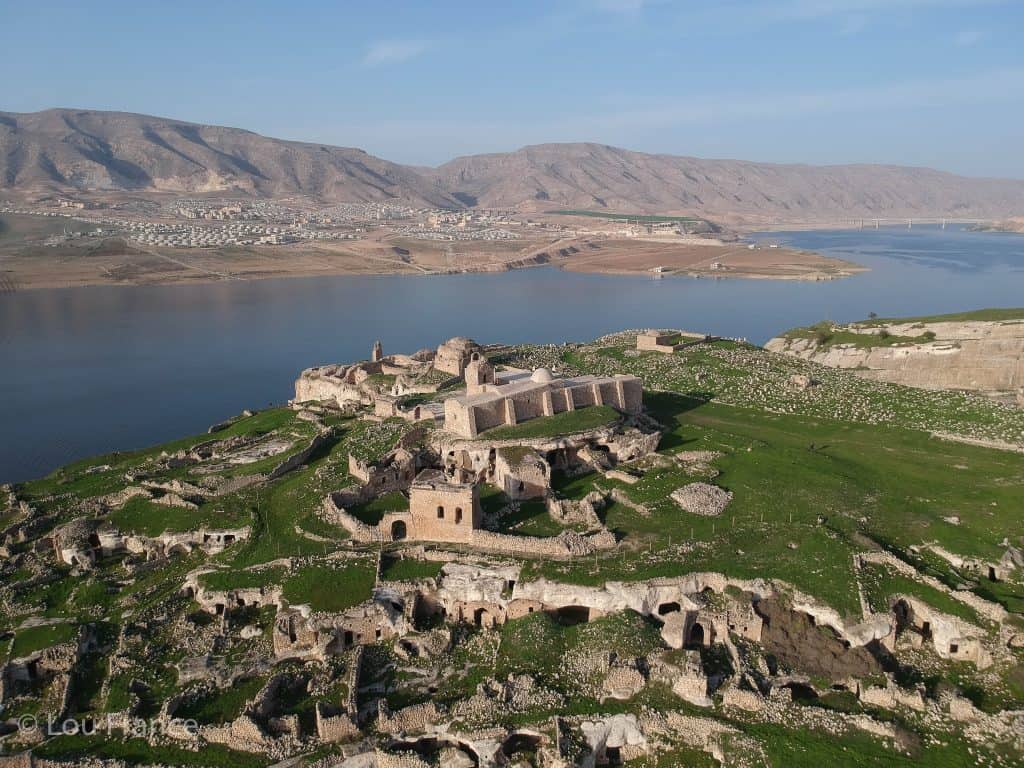
The Grand Mosque, Big Palace and Little Palace
Inside the fort, many of the buildings are being reconstructed. Signposts point the way to the various structures but information boards are lacking so a guide would be handy.
Reconstruction of the Grand Mosque (Ulu Camii) is complete and stands out as the most impressive building on the site. The Big Palace is also receiving some attention but it appears the various churches will be left untouched.
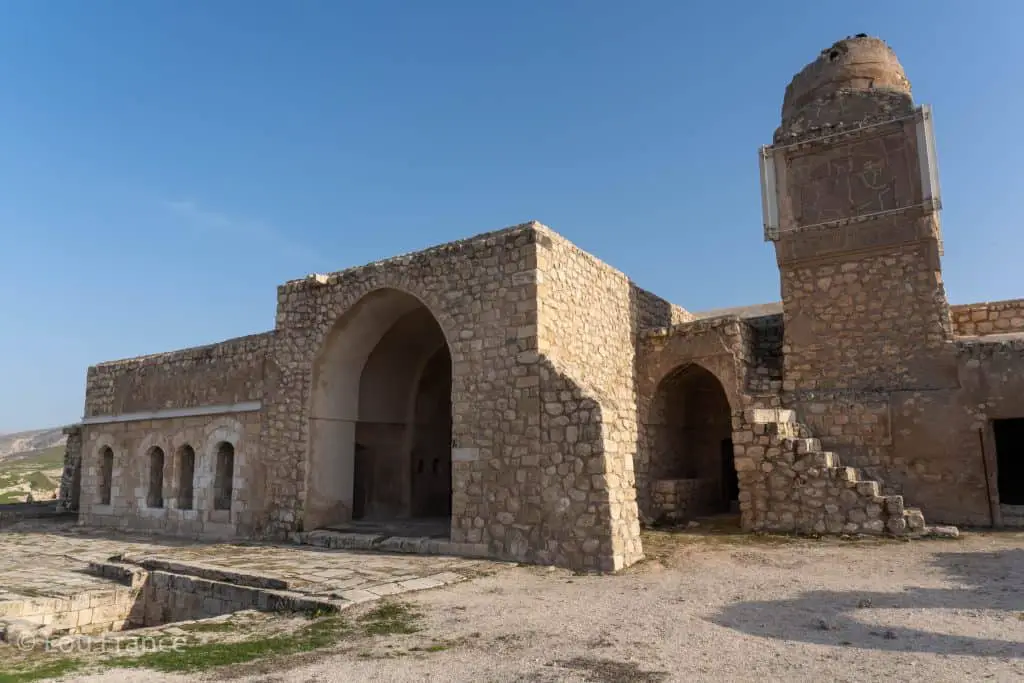
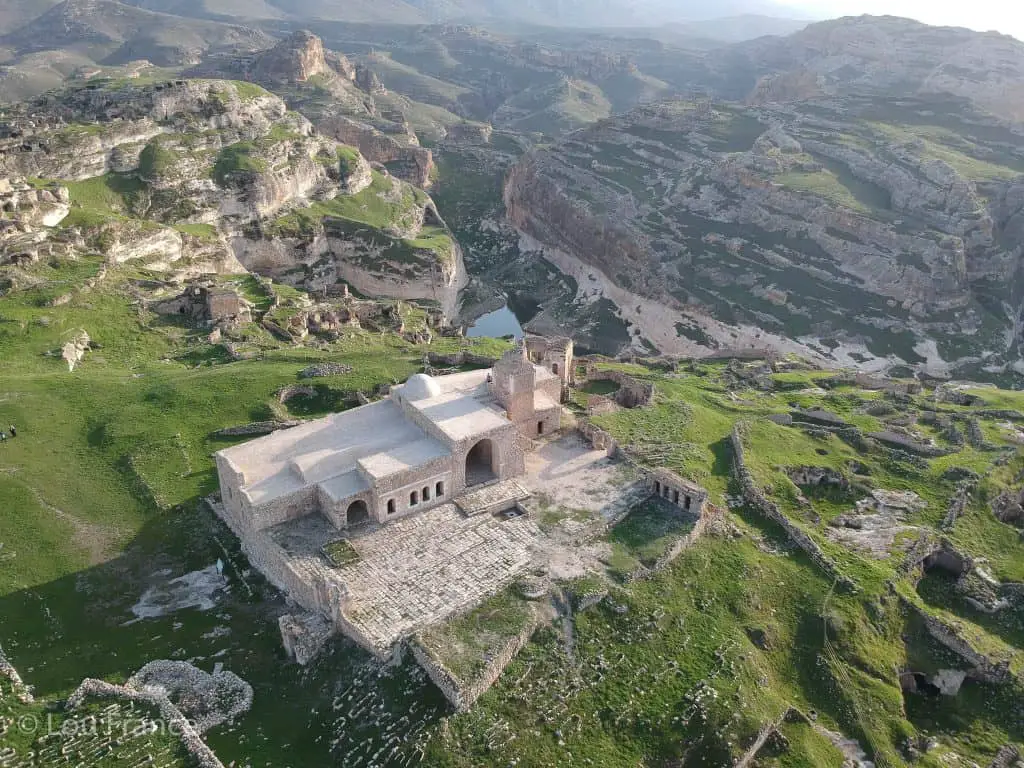
Cave Dwellings
This extensive old ruin spills out over the hillside beyond the main buildings. The structures here are mostly cave houses, many of which were lived in until very recently. This site is quite spread out and wild so allow a couple of hours and wear good footwear.
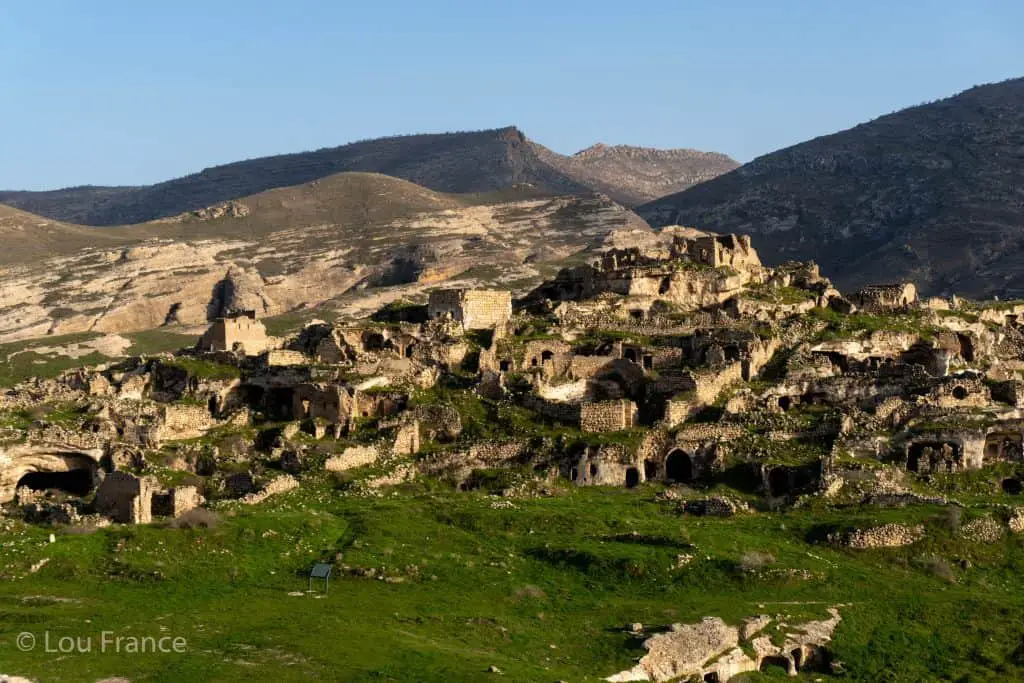
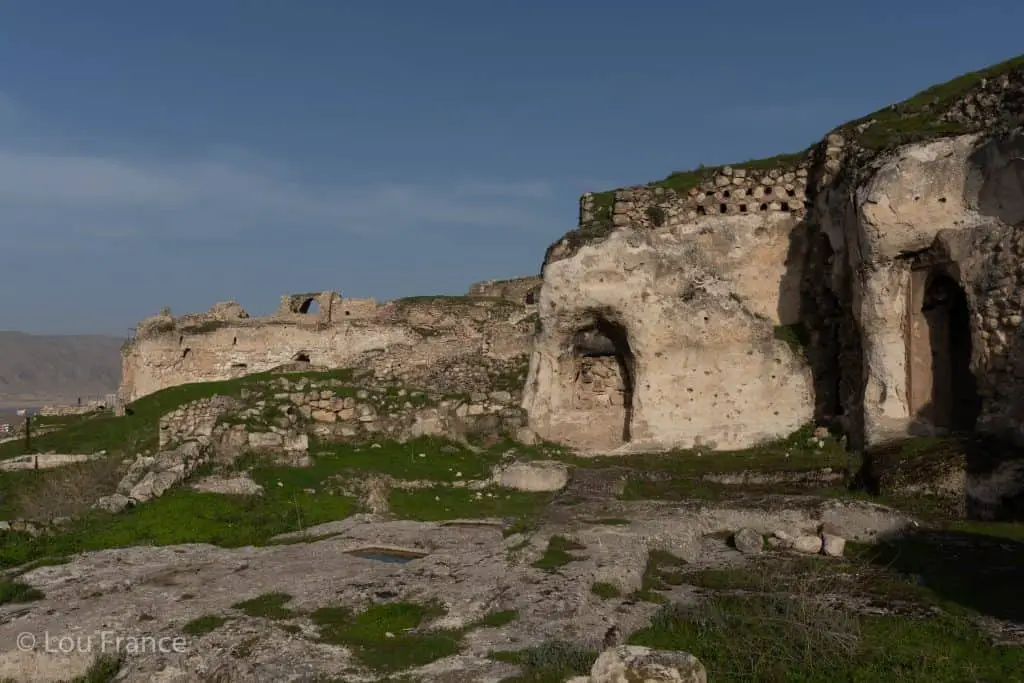
Getting To Hasankeyf
The easiest way to get to Hasankeyf is from Batman (yes there’s a town called Batman!) which is 35km away. Local dolmus run between Batman Bus Terminal and Hasankeyf and buses from all major cities in Turkey run to Batman. Check bus prices here.
There are also domestic flights from Istanbul to Batman everyday. Check latest flight prices here.
Whilst New Hasankeyf is still developing, it’s probably better to visit Hasankeyf on a day trip from Mardin or Diyarbakir. Tour agencies will offer tours from these cities or if you have a car you can take you own trip.
Renting a car in Turkey is easy and relatively cheap. Get a great deal on car rental here. If you’re thinking of driving in Turkey as a foreigner, take a look at this guide.
This whole region of South East Anatolia is fascinating with plenty of interesting natural landscapes and endless historic interest. On your travels of eastern Turkey, be sure to visit Turkey’s most famous heads, Nemrut Dagi and don’t miss my favourite city in Turkey, Mardin.
For a truly authentic bazaar experience, add Sanliurfa to you list and to experience the Kurdish capital of Turkey, visit Diyarbakir. Finally, don’t miss the gastronomical heart of Turkey with a trip to Gaziantep.
Places to Stay Near Hasankeyf
The new town of Hasankeyf is still developing so the best options for accommodation are in nearby Batman. For example, the Atlihanpark Hotel is an excellent hotel which is very reasonably priced.
Local Guides
We met one young local guide Ahmet who, along with a photographer friend of his, had published an excellent book documenting Hasankeyf both pre and post flood. The prosperity of the town is likely to depend to a large extent on tourism, so hopefully Ahmet and others like him flourish in their new town and make it the desirable place to live that it always was.
There are still plenty of interesting sites to see amongst the old ruins and surrounding hills to make a visit worthwhile. Hiring a guide will help you understand the rich history of the area. The remaining ruins were the playgrounds of local guides when they were kids, so they know all the best spots.
You can contact Ahmet Agolday on +905071938663 or via email at [email protected]
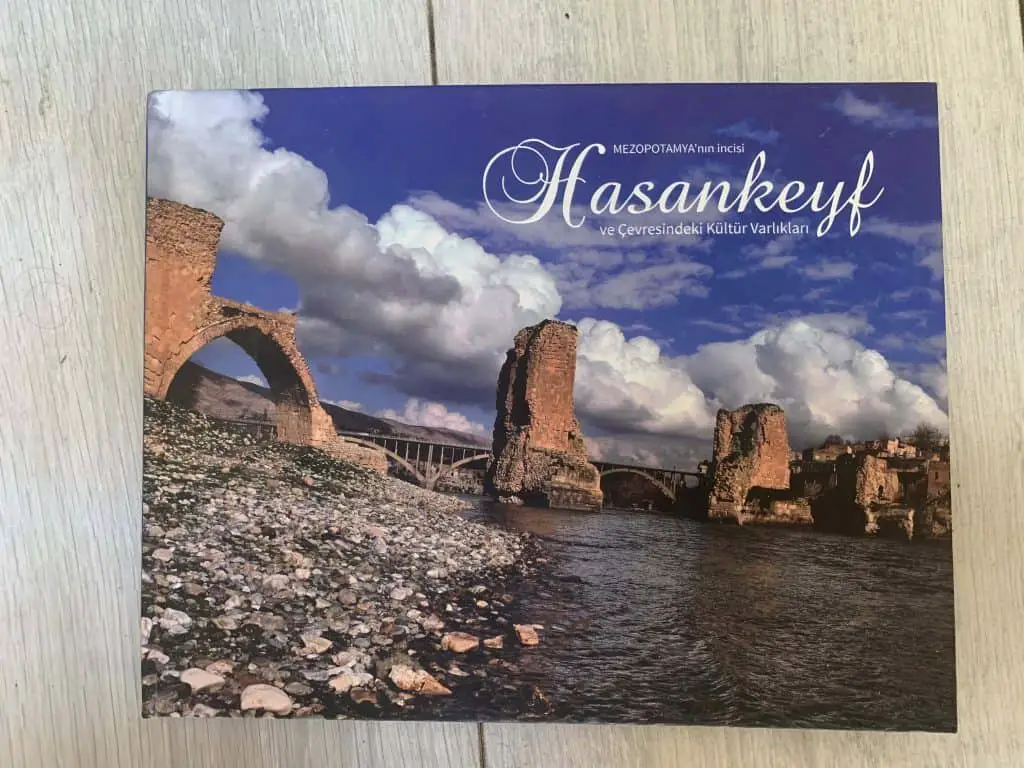
Hasankeyf In 2024 Summary
While Hasankeyf will never be what it was, for the sake of the people who live there I hope the new town develops into a place they will be proud to call home. For tourists planning to visit the area I say don’t be put off by the sad story of a lost city.
Hasankeyf still has plenty to offer with a unique landscape and long and fascinating history. Hasankeyf Fort is a great place to wander around and get lost amongst the ruins.
The Cultural Park is home to a great little museum and monuments to Hasankeyf’s past. Watch this space because the work isn’t finished here yet. It will be interesting to see how the place looks once the new town and cultural park becomes more established.
A beautiful place in Turkey for a future visit perhaps?
Join My Newsletter Today!

